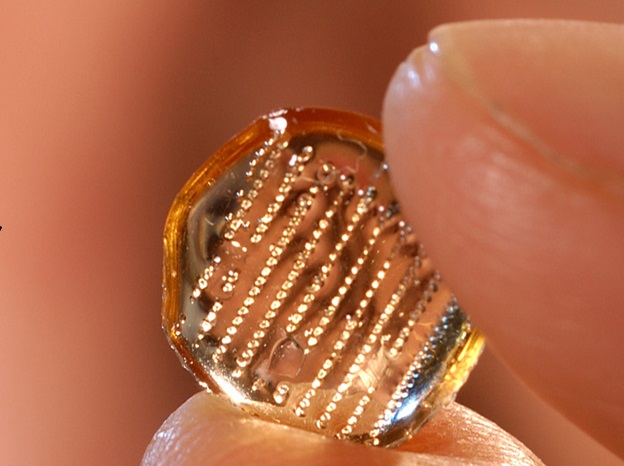7 Revolutionary Medical Technologies
Glow-in-the-dark cancer tumors, cryopreservation of organs and a vaccine patch are among the seven breakthrough medical technologies announced by researchers in a March 2018 release. [This article first appeared on LongevityFacts. Author: Brady Hartman. ]
Glow-in-the-dark cancer tumors, alcohol tattoos, MRI coils, a malaria pill, tracers that light up prostate cancer, cryopreservation of organs and a needle-free vaccine patch are breakthrough medical technologies sponsored by the National Institute of Biomedical Imaging and Bioengineering (NIBIB) and showcased in March of 2018.
Glow-in-the-Dark Cancer Tumors
The ideal way to cure cancer is to cut the entire tumor out, without having to suffer radiation therapy or chemotherapy. Unfortunately, a surgeon often leaves microscopic bits behind, which can later regrow into a new tumor.
The old solution involves taking tissue samples from the patient and sending it to the pathology lab. This is a lengthy process while the surgeon waits for the lab to report back, piece by piece, whether there’s any residual cancer. This not only increases the time patients are left on the operating table, but it is also just moderately effective. Surgeons unwittingly leave microscopic cancer cells behind, in many cases.
Quyen Nguyen, MD is a surgeon with the University of California San Diego (UCSD) who wants to improve surgical outcomes for cancer surgery. Dr. Nguyen collaborated with Nobel prize winner Roger Tsien to develop a fluorescent molecule that causes cancer to glow, making it easier for them to be removed during surgery. When the fluorescent molecule comes in contact with enzymes that are explicitly found in cancer, it enters the tumor cells. This approach has only tested in animals, and Dr. Nguyen hopes to begin clinical trials.
Alcohol Tattoo
NIBIB-funded engineers developed a small monitoring device, worn on the skin, that detects alcohol levels in perspiration. The engineers who announced their results in a study published in the journal of the American Chemical Society, designed the alcohol tattoo as a convenient method for people to monitor their alcohol intake. The engineers hope the device could help reduce risky drinking that can lead to vehicle crashes and the degeneration in the health of heavy drinkers.
Kindler, Gentler MRI Coils
New, screen-printed, flexible MRI coils aim to improve patient comfort and decrease the amount of time it takes to get an MRI scan. Researchers funded by the NIBIB developed light and flexible MRI coils that produce high-quality MRI images that could lead to shorter MRI scan time periods and in the future.
Slow-release Malaria Pill
According to the WHO, malaria kills around 429,000 people every year. Part of the difficulty eliminating malaria is because a substantial proportion of patients live in rural areas with poor access to doctors. This means that many malaria patients often do not comply with the stringent daily schedule malaria prevention medicines require. Researchers reported in the journal Science that they developed a capsule that releases drugs that help to prevent malaria infections and lasts for up to two weeks. While the new delivery system needs to be tested, it could improve treatment of malaria; until technologies such as mosquito eradicating gene drive or other, safer technologies come along to control malaria-carrying mosquitos.
Lighting up Prostate Cancer With Tracers
Scientists developed a new radiotracer to diagnose prostate cancer faster and easier and conducted a successful Phase 1 clinical trial, reports a study published last year in the Journal of Nuclear Medicine.
Aside from skin cancer, prostate cancer is the most common cancer among men in the United States reports the Centers for Disease Control (CDC). About 1 in 9 men will be diagnosed with prostate cancer during his lifetime. The CDC adds that the disease is one of the leading causes of cancer death among men.
Prostate cancer is especially difficult to diagnose. Although researchers are developing new liquid biopsy tests for cancer, these promising diagnostics have not been vetted. While prostate cancer is relatively easy to treat in its early stages, it is prone to spreading or metastasizing throughout the body and can quickly become deadly. To plan how aggressively they should treat the disease, it is essential for physicians to know how far the cancer has progressed. The new radiotracer is designed to ‘light up’ tumors on PET and SPECT scans.
Liver Cryopreservation
Researchers invent a new cryopreservation technique that triples the shelf life of human livers for transplantation. The new supercooling technique extends the amount of time human organs could remain viable outside the body, tripling the time to three days from the current shelf life of one day.
While the research advance applies to the cryopreservation of organs and not to cryonics, which is the preservation of entire bodies, the new medical technology could help address the organ shortage. More than 110,000 patients are on waitlists for organs in the United States alone, due to the organ shortage.
This study was conducted in rodents, and if successful in humans, it would allow donor livers to be transported around the world, saving more lives.

Needle-free Vaccine Patch
Researchers develop a microneedle patch for flu vaccination. A team at the Emory University and the Georgia Institute of Technology showed that an influenza vaccine could be administered safely with an experimental patch made of dissolving microneedles. The method produced robust immune responses and is an alternative to needle-and-syringe immunization. The scientists say that with further development, the vaccine patch could eliminate the discomfort of injection as well as the expense and inconvenience of visiting a flu clinic. While this vaccination technology has only been tested with influenza, it holds promise to be expanded to other immunizations, such as the cancer vaccines currently available to prevent tumors.
Like this Article?
- Help us spread the word – Click on any social media link to share this article.
- Follow us on social media – Google+ or Reddit
References
Cover Photo: mediaphotos/Getty Images.
Disclaimer
Diagnosis, Treatment, and Advice: This article is intended for informational and educational purposes only and is not a substitute for qualified, professional medical advice. The opinions and information stated in this article should not be used during any medical emergency or for the diagnosis or treatment of any medical condition. Consult a qualified and licensed physician for the diagnosis and treatment of any and all medical conditions. Experimental treatments and medical technologies carry a much higher risk than FDA-approved ones. Dial 9-1-1, or an equivalent emergency hotline number, for all medical emergencies. As well, consult a licensed, qualified physician before changing your diet, supplement or exercise programs.
Photos, Endorsements, & External Links: This article is not intended to endorse organizations, companies, or their products. Links to external websites, mention or depiction of company names or brands, are intended for illustration only and do not constitute endorsements.
